Amir H. Fallah speaks with Shahrzad Hamzeh about the power of artists to bring light to darkness
On September 16, 2022, Jina Mahsa Amini, a young Iranian Kurdish woman, was killed after being arrested by the morality police for allegedly not wearing the hijab in accordance with government standards. Her death at the hands of the police led to an eruption of protests against the regime that are still ongoing. While these are not the first such protests, what is different this time is that Iranians around the world have joined in. Despite the Islamic Republic limiting access to the Internet, Iranian voices continue to resound.
At a moment when Iranian people are still being executed by the regime, artists continue to raise awareness about the situation despite dwindling media coverage. One such artist is Amir H. Fallah, whose practice uses painting, sculpture, public art, and NFTs to explore the politics of hybrid identity. His recent project CHANT is a campaign to raise funds for a new work bearing the rallying cry of the movement — “WOMAN, LIFE, FREEDOM” — in English, Farsi, and the phonetic Farsi. This billboard-scale neon artwork is now being displayed prominently on the facade of Shulamit Nazarian in Los Angeles, home to the world’s largest community of Iranians outside of Iran.
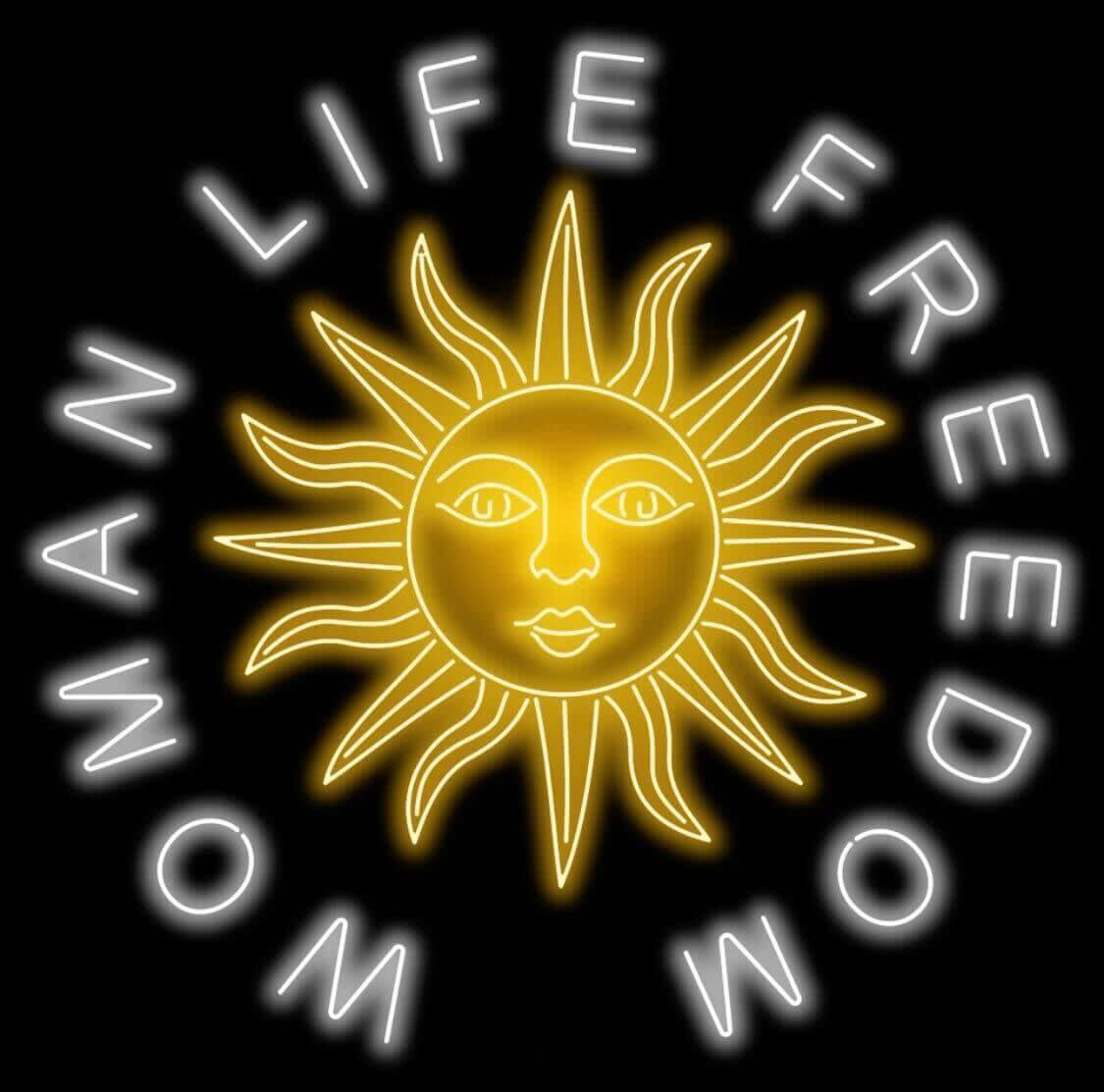
Amir H. Fallah, CHANT, 2022. Courtesy of the artist and Shulamit Nazarian, Los angeles.
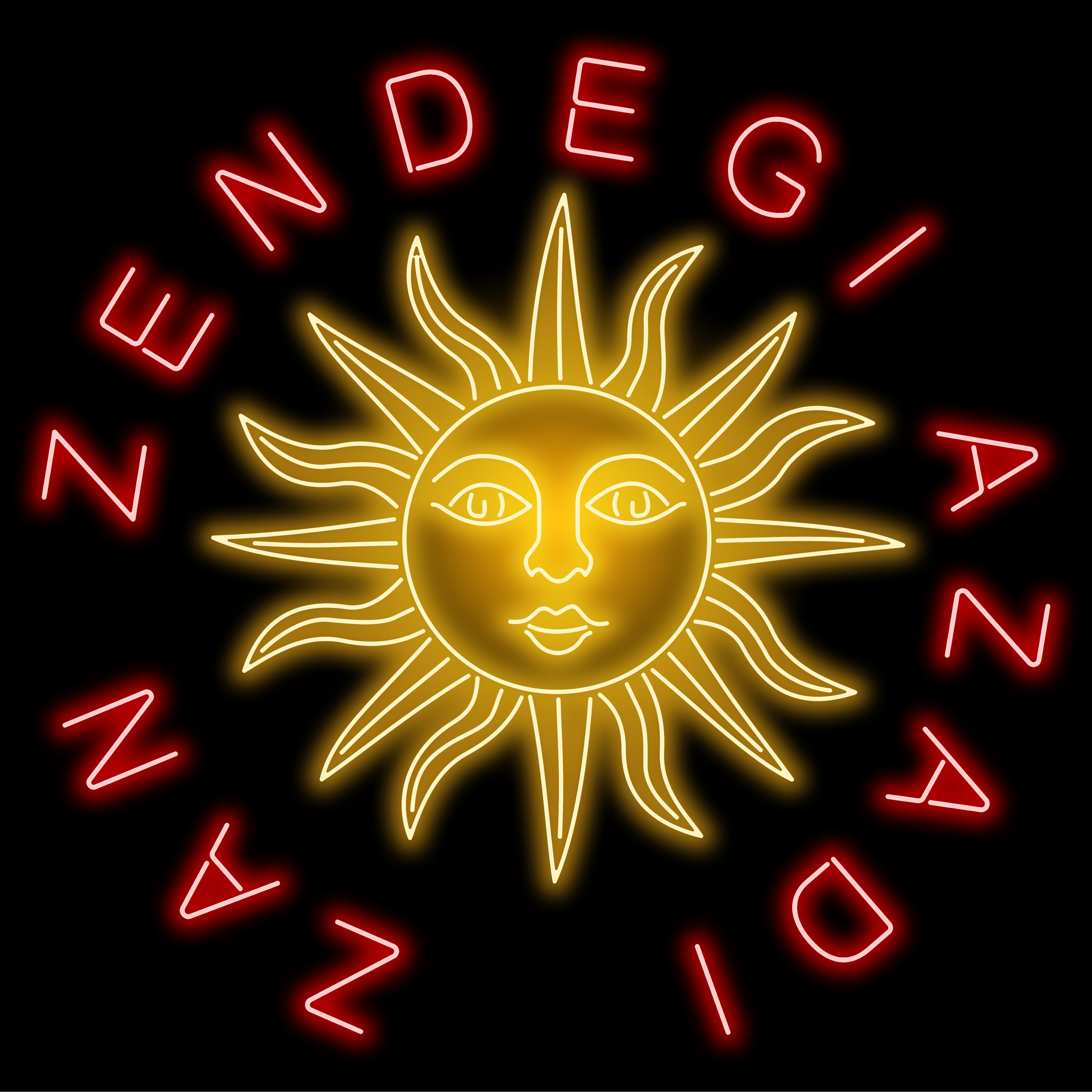
AMIR H. FALLAH, CHANT, 2022. COURTESY OF THE ARTIST AND SHULAMIT NAZARIAN, LOS ANGELES.
Shahrzad Hamzeh: How did the idea for CHANT come together and what prompted your decision to use neon? I believe you’ve collaborated with a childhood friend, Matt Dilling, who runs the fabrication studio Lite Brite Neon?
Amir H. Fallah: When the protests erupted in Iran, I was communicating with many friends and family members there, and their foremost request was to amplify their message. My initial thought was to gather funds and lease billboard space. However, the idea that all the funds would go to a corporation did not align with my beliefs. Fortunately, because CHANT is a work of art, I can utilize my resources within the art community to gain media exposure and reach a wider audience.
As an artist, you have a back door where people may not openly discuss political issues, but because it is covered under the umbrella of art, it becomes acceptable. I wanted to take advantage of this.
The neon artwork will eventually be sold, and the proceeds from the sale will be donated to three human rights organizations: OMID Foundation, the Center for Human Rights in Iran, and Amnesty International. This is a way to maximize the impact of the donations and to do more good. Chanting is a way to raise public awareness, to show solidarity with the Iranian people, and ultimately to support human rights charities.
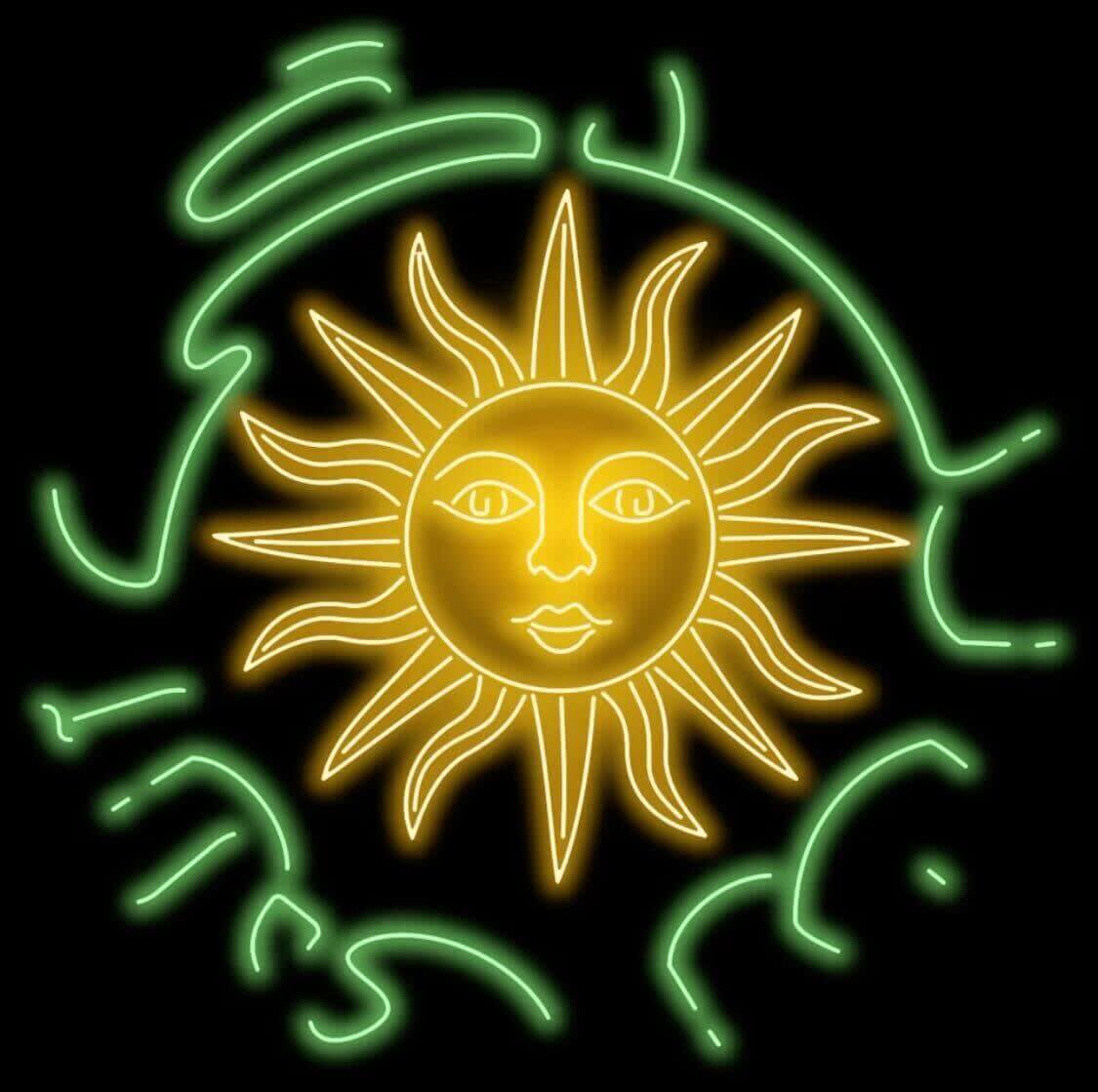
AMIR H. FALLAH, CHANT, 2022. COURTESY OF THE ARTIST AND SHULAMIT NAZARIAN, LOS ANGELES.
SH: Do you have experience of the Islamic Republic? Were you born in Iran?
AHF: I was born in Iran during the Revolution and I left when I was four. I have memories of my mother closing the curtains so we could watch a Western movie on VHS, as well as friends and family gathering together for secret dance parties. Although I don’t have many memories of the Iran-Iraq War, I recall air raids and playing in my grandmother’s bomb shelter. I have a vivid memory of an air raid in Tehran where the entire community had to go outside out of fear that their buildings would be bombed.
I remember reaching out to the planes flying overhead and trying to shoot them down with my fingers.
As a young child, I didn’t fully comprehend the seriousness of the situation. Now that I have a child the same age, I often think about what I would do in a similar situation. Living in constant fear for one’s safety is a deeply traumatic experience.

Installation view of Amir H. Fallah, “A War on Wars,” at Shulamit Nazarian, Los Angeles, 2023. Courtesy of the artist and Shulamit Nazarian, Los Angeles.
SH: Do you use any of your experiences in your work?
AHF: Seeing videos from Ukraine brought back suppressed memories from my childhood. I lived through a similar experience, which is why my family left [Iran]. The thought of my child going through the same thing is devastating. In response, I created a series of works called “A War on Wars” that will be exhibited at Shulamit Nazarian in Los Angeles. These works were created prior to the protests in Iran. I have also created a separate body of work, to be displayed at Art Basel Hong Kong, which addresses the current situation in Iran specifically.
SH: Tell me more about the process of creating CHANT. I heard you used NFTs as part of the project.
AHF: As part of my fundraiser for CHANT, I created an NFT as a means of raising money for the neon project. A portion of the donations came from the sale of the NFT, which was based on a rendering of CHANT. I created a limited edition of 1,000, which was available for only two days. Any unsold editions were destroyed, which increased the value of the token.
People bought and sold editions on the secondary market during the week, leading to further fundraising through secondary royalties.
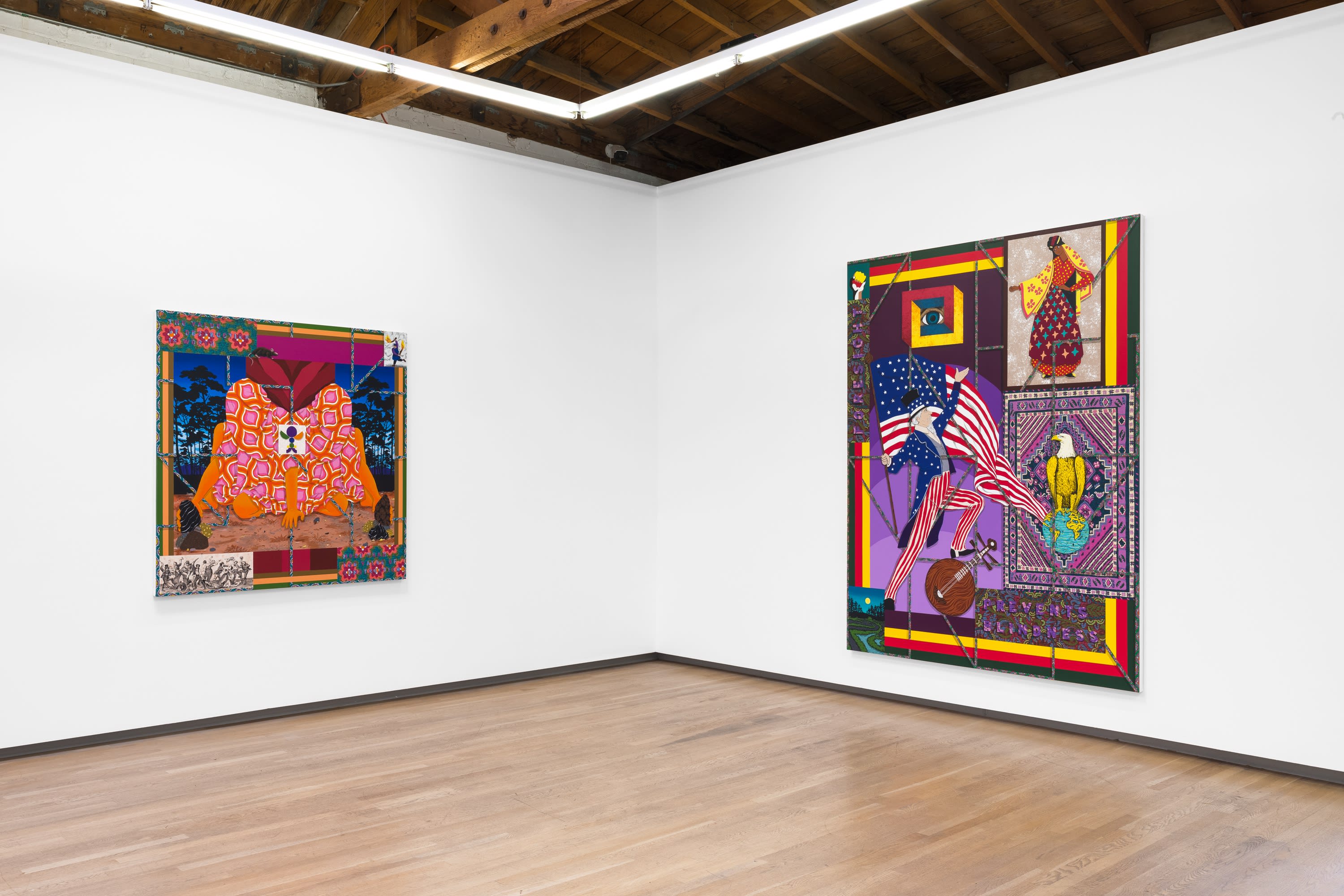
INSTALLATION VIEW OF AMIR H. FALLAH, “A WAR ON WARS,” AT SHULAMIT NAZARIAN, LOS ANGELES, 2023. COURTESY OF THE ARTIST AND SHULAMIT NAZARIAN, LOS ANGELES.
Several NFT artists also donated works for the fundraiser, and at the end of the week, each CHANT NFT offered the chance to win another NFT from a different artist through a raffle. Thanks to blockchain technology, the entire process was automated, making it easy to send the prize NFT automatically to the winners. NFTs make selling, buying, and collecting digital assets convenient and efficient, which is useful for fundraising purposes.
A year ago, during the early days of the war in Ukraine, a group of friends and I organized an NFT fundraiser for charities there. We were able to raise $25,000 in just one day and, as the NFTs were bought and sold multiple times, the total amount raised reached $50,000. Even today, almost a year later, whenever one of those NFTs is resold, the charities automatically receive a portion of the proceeds in cryptocurrency. Because NFTs can have a royalty assigned to them, they are an efficient and effective way to support a cause over a long period of time.
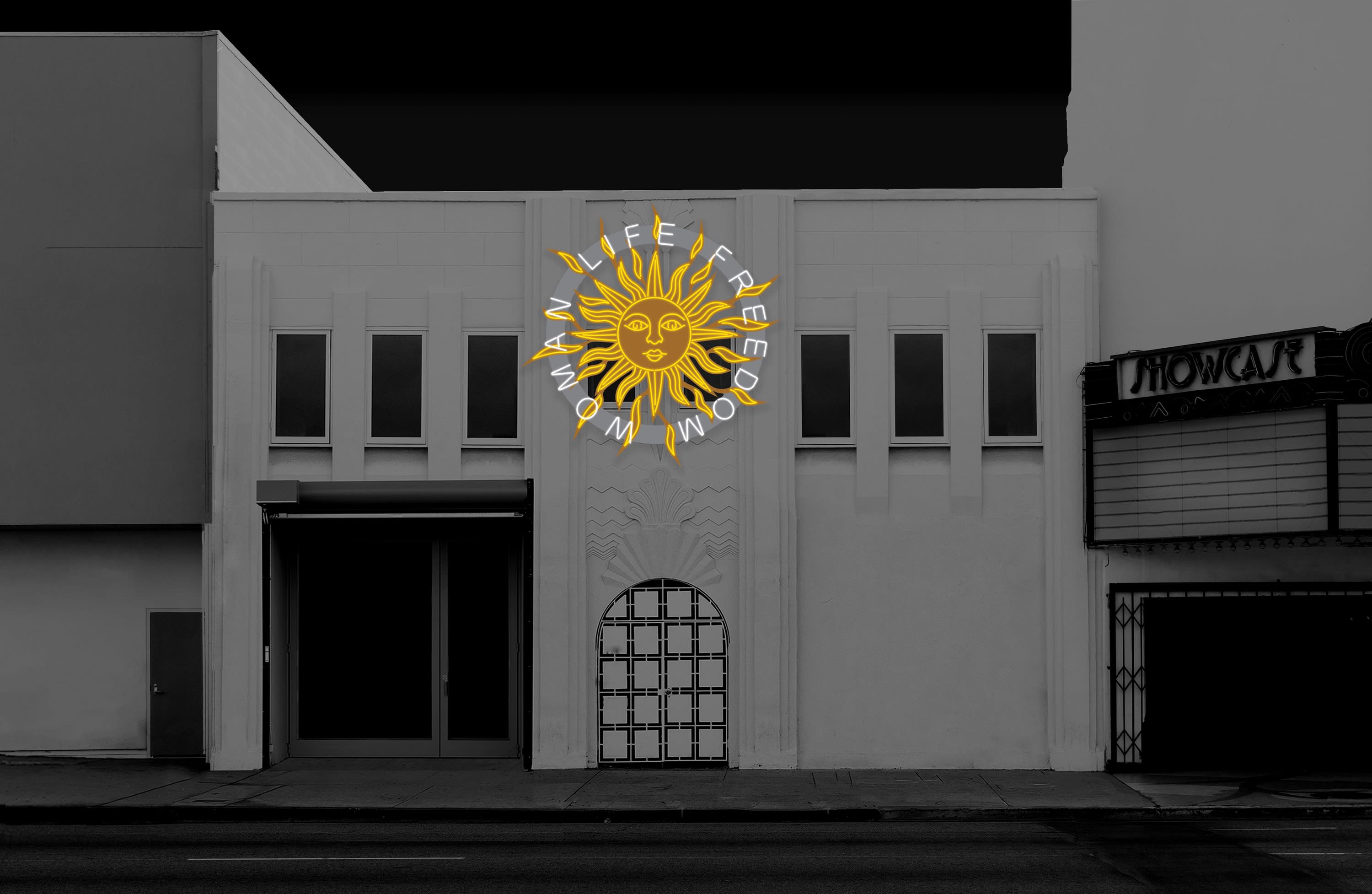
Artist's rendering of Amir H. Fallah "Woman, Life, Freedom" neon artwork. COURTESY OF THE ARTIST AND SHULAMIT NAZARIAN, LOS ANGELES.
SH: What is the state of digital art in Iran and where do you see it going in the future?
AHF: There are many Iranian artists living in Iran who create NFTs. Due to the country’s struggling economy, people are facing difficulties, especially artists. NFTs have provided a source of income and means of survival for artists and designers in Iran. This new sales channel makes buying and selling art convenient and allows creators to raise money globally. The technology enables them to reach a wider audience and participate on a global scale. I have collected the work of Iranian artists not only to appreciate their art but also to support and help young artists. I share their work whenever possible because a small sale in America can mean a lot to them.
While it is difficult to predict the future of NFTs, they could benefit Iranians because they make it easier to earn income without restrictions. As regular jobs become harder to find, NFTs allow people to reach a global market without worrying about sanctions.
Although some NFT platforms like OpenSea have banned Iranian artists due to sanctions, there remain ways for artists to work around it by creating their own contracts on the blockchain. Of course, NFTs are not only for artists but also for poets, dancers, and other creators to capture and sell ephemeral work. Artists from all over the world, including Iranians, are using NFTs in innovative ways.
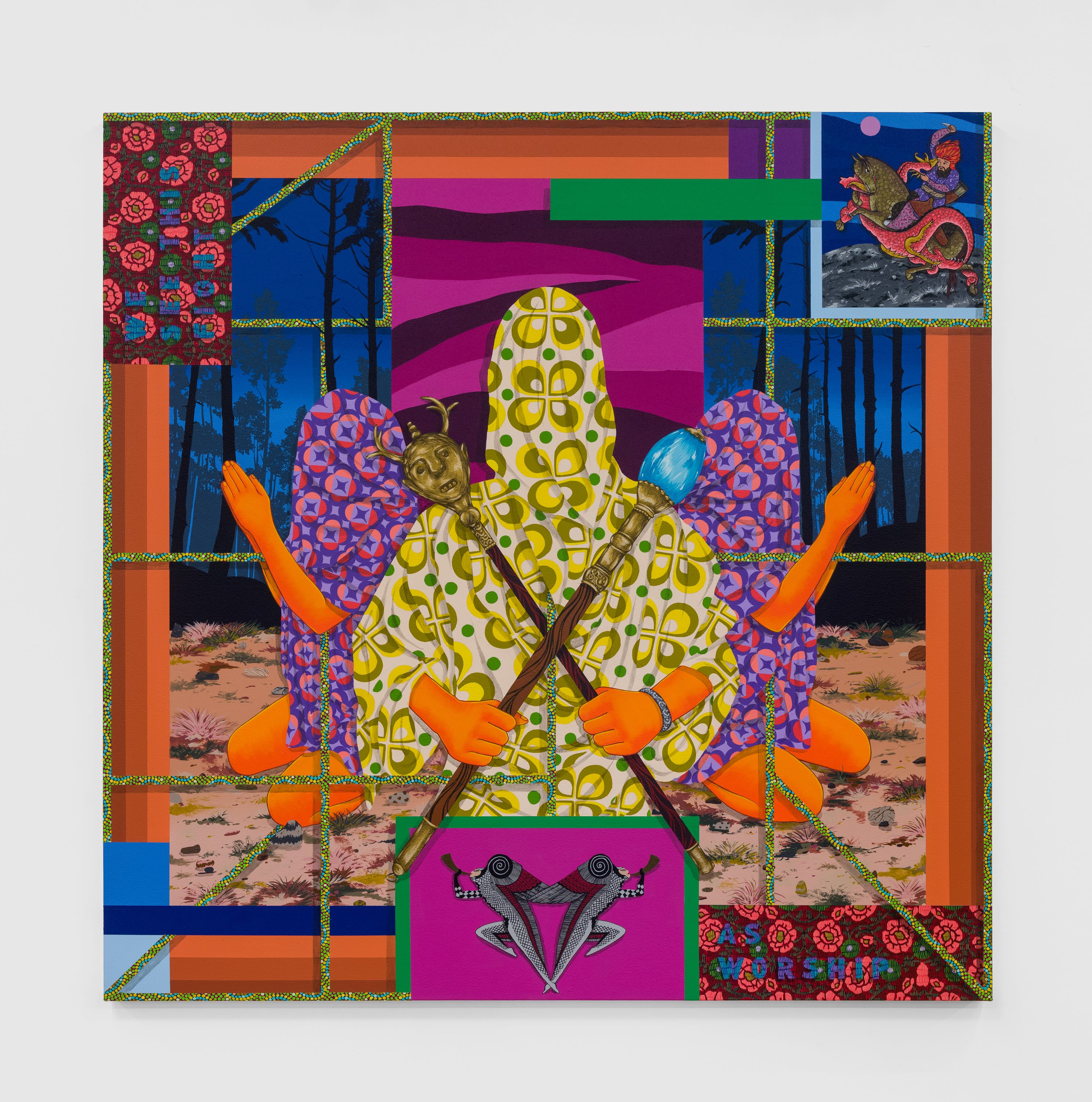
Amir H. Fallah, We See This Fight as Worship, 2022. Courtesy of the artist and Shulamit Nazarian, Los Angeles.
SH: What part are digital artists playing in the fight for freedom?
AHF: My father, who was part of the Revolution in 1979, believes it was a series of small actions that eventually led to a big outcome. Likewise, the current situation requires a collective effort from everyone. If you are an artist, you can utilize your resources and skills to spread the message through your art and engage with your community. If you are a dancer, you can perform to raise awareness. If you are a writer, you can share your thoughts to call attention to the issue. Everyone has to use the tools they have available to make a difference and work towards resolving the problem collectively.
Iran has a rich art history and a talented community of artists across various mediums, including digital art. The country has produced some of the finest works in the fields of typography, design, illustration, and painting. With the rise of NFTs, Iranian artists are now finding new opportunities to showcase their talent, in spite of constraints on resources and political pressure.
The lifting of some sanctions has also opened up more than 400 art galleries in Tehran, resulting in greater recognition for Iranian artists. Many of these artists have worked with international galleries before and have already achieved success in their careers. Their resilience and creativity is truly inspiring.
SH: What impact can art, and digital art in particular, have on civil rights?
AHF: I believe that art has the power to inject emotion and impact into events. My father asked me why I chose to use the sun for the neon sign. While I was inspired by the ancient flag of Iran, I chose the sun specifically as a symbol of energy and life. The sun has been part of the flag for centuries, but the Qajar dynasty gave the lion a sword to emphasize power and masculinity, while the Pahlavis removed its feminine features. This seems like a huge insult to me, considering the strength and intelligence of Iranian women. I wanted to bring back the sun to honor the women leading the current protest in Iran.
I envisioned CHANT as a billboard-size beacon because I wanted to capture attention and make people curious. I felt the piece needed to be larger than life to have the desired impact. The symbolism encourages people to scan the QR code to learn more about the work.
SH: What will ultimately happen to CHANT?
AHF: I hope that the work will be bought by one of my collectors, but that it ultimately goes to a public institution where it can continue to have a life beyond the six months of the exhibition.
This work is more than a representation of what is happening in Iran, it addresses the question of universal human rights that extends beyond borders.


